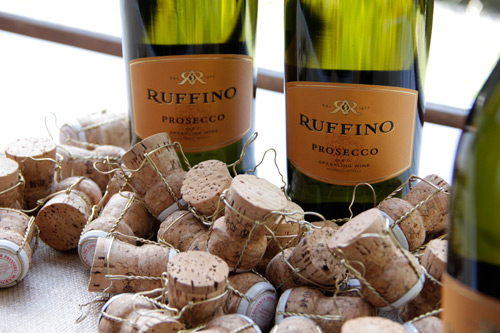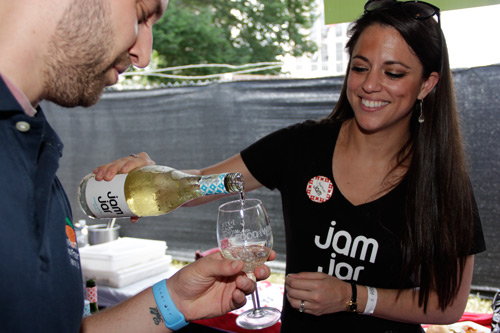Creating a great wine list to compliment your menu doesn’t have to be an enormous undertaking. With a little knowledge and a plan of attack, anyone can put together the perfect wine list and leave their guests with memories of something divine. Let’s take a look at some of the most important things to understand when putting together your wine list.
Wine Basics
While you do not have to be master sommelier to put together a stellar wine list, you do need to know the basics of wine tasting. Luckily, many of the important facts about wine are grouped into 5 basic parts. Here are some of the most important things to look at when examining a bottle of wine.

- The Process – It is integral to understand the winemaking process before picking and choosing your wines because each step plays a role in the final product. There are 5 steps in the winemaking process: grape harvesting, crushing and pressing, fermentation, clarification, and aging and bottling.
- The Label – You can learn a lot about a bottle of wine without even opening it. Wine labels are designed to carry a wealth of information; however, there are 5 pieces of information that are on all bottles. They are: producer / winery, region, variety or Appellation (a legally defined and protected notation of where the grapes were grown that acts as a sort of class or grade), vintage or non-vintage (NV), and alcohol content (ABV).
- Tasting – There are 5 steps in basic wine tasting. Those steps are (in order): examine the color, swirl the wine, smell the wine, sip, and swish. While it may seem logical that swallowing the wine would be the final step in tasting wine, some wine connoisseurs opt to spit wines out at a tasting to simply enjoy the flavors without intoxication. Traditionally this doesn’t happen during dinner pairings, however.
Once you begin to dive deeper, you being to understand the various elements that play a part in shaping the final product. There are 5 basic influencers on the final product:
- Grapes – There are a tremendous variety of grapes that are used for winemaking; upwards of 175. Each grape produces distinctly different wines with different colors, flavors, textures, and body.
- Region – The region that a grape is grown will have a tremendous affect on the final flavor components of the wine. Different soil types, temperature, rainfall, and humidity all have an affect on how well grapes will grow as well as their sweetness, ripeness, and color. Additionally, some areas take well to “noble rot”; a specific type of fungus that grows on grapes that can enhance the sweetness and flavor of the wine.
- Blending – Some wines can be blends of different types of grapes. Since wines are classified by the grapes used to produce them, typically the wine will be classified outside of standard naming conventions. Bordeaux and Sauternes are two of the premier varieties of blended wine, however some blends will just be classified by the grape blend (such as Cabernet / Syrah). It is standard to see the blending ratio included on the label of these wines.
- Aging Cask – Wines are aged in one of three different types of vessels: in oak casks, in stainless steel, or in the bottle. Oak aging creates a mellow, subtler, richer wine, while stainless steel produces a zestier or sharper flavor. Typically, heavier wines are aged in oak, and lighter wines are aged in stainless steel. Bottle aging typically happens in a cellar.
- Vintage – The vintage is the date that refers to when the grapes were picked and fermented. Only vintage wines are bottled aged, and of those vintages, only some are proper for bottle aging. Most wines are intended to be consumed within the first 5 years, so it is important to know how well a specific wine ages before cellaring it. Some wines age very well, including some that exceed 50 years.
Narrowing Your Choices
When choosing wines to pair with your menu, it is important to choose a focus. A wine pairing with food can take on different personalities, so it is important to know what you want to highlight during the meal. Will the food be the shining star and while the wine is in a supporting role? Or will you be doing a winery pairing dinner where the wines are being showcased and the food is a supplement? Here are some things to look at when considering pairing wine with food:

- Compliment v. Contrast – Sometimes you want your wine pairing to work with a dish and enhance its flavors. Sometimes, and more frequently as of late, wine pairings can be used to contrast flavors by cutting across the palate. These pairings can be more complex on the palate.
- Weight – The weight & body of the wine must be the first thing examined after the focus is determined. Weight& body should always work with the dominant flavor of the dish. Typically it’s heavy food with heavy wine, and light food with light wine. Mismatches could drown one or the other out. Sometimes contrast can be nice. For instance, a light acidic wine can cut the richness of a cream sauce and a rich red can add depth to mild dish. But this balance requires more experimentation and it is important that they not be blindly matched.
- Acidity – It is standard to match the acidity of your wine pairing to the acidity of the food. If the food is more acidic than the wine, it will wash out the flavor of the wine. Comparable acidity will pull some of the other components of the wine out. Acidic wine is also very good at contrasting rich, fatty dishes.
- Sweetness – In most cases, wine need to be sweeter than the dish it is being paired with. Sweet dishes can make dry wines taste extra tart or bitter. Sweetness is often used to balance or contrast spice and heat, as well as tartness and acidity.
- Bitterness – Tanins are plant polyphenols that are extracted along with the juice during the winemaking process, and are usually the main source of bitterness in wine (with aging casks the second leading source or tannins). While they can add a gritty texture or a bit of an astringent taste to the wine (depending on the tannin levels), they also help give wine body. Tannins react with proteins in foods, and often the best options for pairing a wine with heavy tannins (such as a Cabernet Sauvignon) are foods with higher fat and protein content. Since these wines are usually heavier, they tend to pair poorly with things like fish, spicy foods, or sweets.
- Alcohol – The alcohol content of a wine is one of the other major factors that give wine its body. The alcohol content adds a richness to wine’s texture, but it can also have very distinct reactions within the mouth. Alcohol magnifies the feeling of heat when paired with spicy food, and higher alcohol content usually means that a wine will be less sweet because there are less leftover sugars. This is not always the case, however. Port and Ice Wine are two examples where this does not hold true.
Bring it all Together – Crafting Your Wine List
Now that you understand the basics, it is time to start examining the process of building the wine list itself. Here are the final things to consider when putting your wine list together.
The wines you have should echo your concept. French restaurants? French wines. Modern American fare? Mix it up. Classic wine pairings include:
- Delicate flavors such as salads, vegetables, fish, and citric sauces pair well with Rieslings and Sauvignon Blancs. Consider these when your main protein is poached or steamed.
- Earthy and hearty flavors from poultry, pork, mushrooms, butter or cream sauces, and most roasted dishes work well with Chardonnasy, Viogniers, Pinot Noirs, and Merlots.
- Acidic dishes common in Italian cuisine work well with Chiantis or Zifandels.
- Meaty dishes with layers of spice balance well with headier wines such as Cabernet Sauvignons, Syrahs, and Zinfandels. These are the go-to for grilled dishes.
- If you are offering a variety of fares choose versatile wines.
Anyone involved in choosing the wine list should taste the wines you intend on serving. You can build dishes around wines what you’d really like to serve. And remember, not all of the wines are incredibly expensive and expense may not translate into a better glass. Opting for a more affordable bottle of wine may mean you can offer extra glasses to your guests or a different pairing with each course of the meal.
For Restaurants, Bars & Catering Operations
Due to variety of menu options, food service establishments will often have stock of many different types of wines. Owners of food service establishments may want to keep lower levels of stock and general bar supplies so you can refresh your wine list along with your menu.
Storing wine will usually occur on as needed bases for caterers but may be a focal point for bars and restaurants. If your establishment is planning on having a large wine offering, consider how much space is available to store wine. Cellars will have to be much larger to accomodate aging vintages.
Offer your customers several different pricing options on your list. Additionally, discounting glasses or bottles can be a great way to clear out that cellar for something that will sell better or be a better seasonal pair.
Be sure to keep a watchful eye as to what wines are selling and what isn’t. Real estate in a restaurant is expensive, and if you have wines on your list that aren’t moving - replace them. If you can’t seem to keep something on the shelf, maybe order a little extra next time. Keep a watchful eye on ordering until you start to see trends.
Cheers!
By now, you should have a solid foundation to begin crafting your restaurant’s wine list. A great wine list is an ever-evolving collection, and can add depth and ambiance to any meal. And of course, if you want your wine game to truly shine, consulting with a sommelier or taking wine tasting classes can be a fun and educational way to go.

